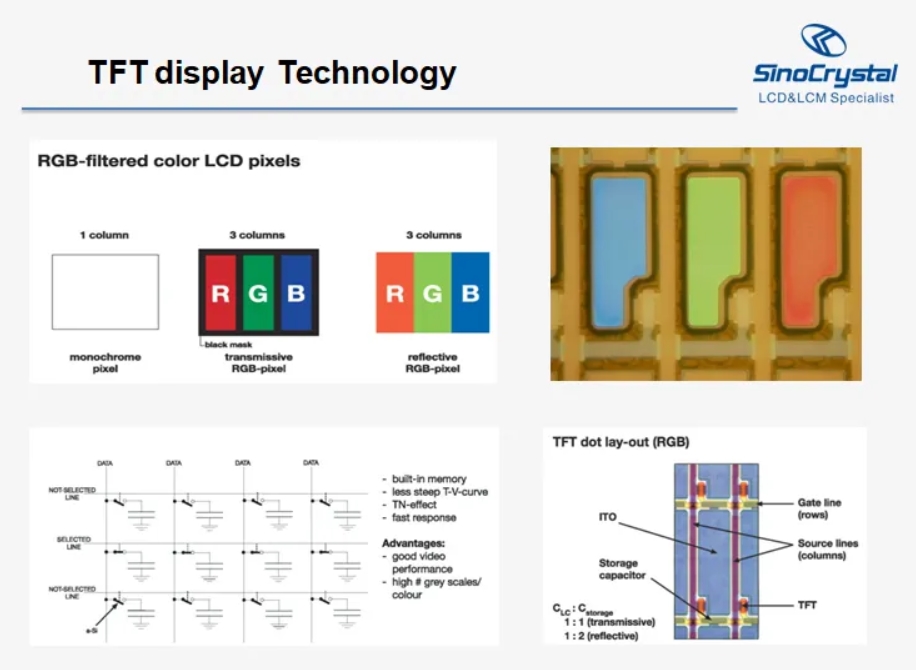What is a TFT?
TFT LCD (Thin Film Transistor Liquid Crystal Display) is a thin display type, which has a sandwich-like structure with liquid crystal filled between two glass plates.
TFT Glass has as many TFTs as the number of pixels displayed, while a Color Filter Glass has color filter which generates color. Liquid crystals move according to the difference in voltage between the Color Filter Glass and the TFT Glass. The amount of light supplied by Back Light is determined by the amount of movement of the liquid crystals in such a way as to generate color.
Also designed in the late 1980’s, TFT display technology is just another variation of LCD displays that offer greater color, contrast, and response times as opposed to available passive matrix LCD’s.

TFT Display Features
TFT display technology have developed over the years and have become quite popular in nowadays. Then what’s the tft lcd display module features of this technology:
- Superior color display – for technology that requires it or for consumers that desire color screens.
- Not only is the color superb, but the clarity outstanding
- Features a longer half-life, (half-life is the amount of time in hours before the display is 50% as bright as when it was first turned on), than OLEDs and comes in varying sizes, from under an inch up to over 15 inches
- Capacitive Touchscreen or touch panel, which is in the majority of Smartphones and allows for additional functionality, specifically for zooming and scrolling
- Resistive touch panel which is lower in cost and are usually standard on most TFT devices
- Aspect ratio control, which refers to a screen’s ability to maintain an aspect ratio of a source image at the hardware level, and 1:1 pixel mapping, used to literally “map” the exact number of pixels specifically in the source resolution to pixels on the screen
- No “ghosting” (ghosting is when an image will stay on for a short time when instead it should be off)
- Variety of displays, which can be interfaced through a variety of bus types, including 18 and 24 bit for red/green/blue, LVDS, and 8 bit and 16 bit for a CPU – many controllers allow for two or more different types of interfaces on the same TFT screen
Advantages of TFT Display technology
With TFT display technology, less energy consumption is a big deal, especially when dealing with bigger screens, and of course less electricity means lower cost, overall. The visibility is sharper, meaning no geometric distortion, which is great for these tired, old eyes. The response time and physical design of the screens are also appealing. TFT displays can also save space and be placed virtually anywhere in an office or home, because of the brightly lit feature and crisp clear images.
Disadvantages of TFT Display technology
Some cons of TFT screens deal with the viewing angle, which create distortion, resulting in a less-than-perfect image. Static resolution, meaning the resolution can’t be changed, may also cause a problem, but newer models seem to have tackled that issue. The accuracy of the display of colors is not perfect, specifically strong blacks and bright whites, so when printing an image, it may not display the spectrum of colors.






